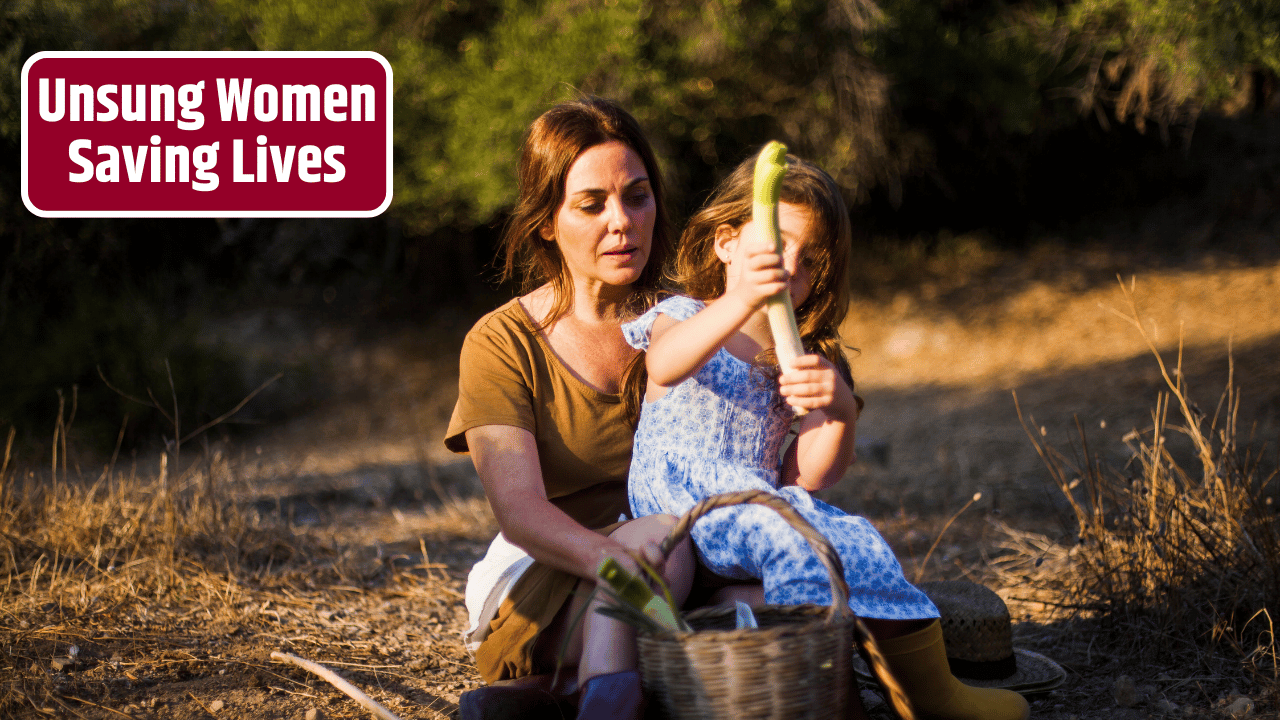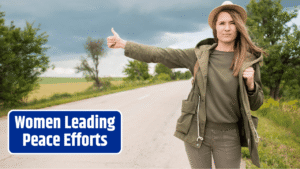I remember meeting Priya, an aid worker fresh from a brutal conflict zone in Africa, at a conference last year. While sipping chai during a break, she told me about days without sleep, delivering babies amid gunfire, distributing food under constant threat, and negotiating safety corridors for civilians with armed groups. And yet, she laughed lightly, shaking off the label “hero.”
“You know,” Priya mused quietly, “They only see us as ‘helpers.’ But trust me, we’re fighting a different kind of war every day.”
Priya isn’t unique. Across conflict zones globally, women humanitarians quietly shoulder some of the heaviest burdens, taking immense risks. Yet, shockingly, they rarely get recognition or support comparable to their male counterparts. Let’s fix that.
Table of Contents
The Invisible Frontline: Women’s Unsung Bravery in Conflict Zones
The world has come to understand war through images of male soldiers, diplomats, and leaders. But women humanitarians? They rarely make headlines, despite being pivotal to survival in war zones.
Consider this: globally, women constitute around 40% of humanitarian workers in active conflict areas. They often have unmatched access to vulnerable populations, notably other women and children. Whether offering medical care, emotional support, or facilitating peace talks—women humanitarians provide a lifeline, often at profound personal cost.
Yet, recognition? Practically nonexistent.
Statistics Don’t Lie: The Realities Women Humanitarians Face
Here’s a quick, sobering reality check:
| Aspect | Women Humanitarians (%) | Male Humanitarians (%) |
|---|---|---|
| Experienced harassment/threats | 69% | 48% |
| Provided direct community care | 84% | 52% |
| Leadership or management roles | 32% | 68% |
| Recognition in media coverage | <10% | ~90% |
Reading those numbers hurts. The imbalance in recognition, safety, and leadership opportunities is embarrassingly clear.
Why Do We Forget Women Humanitarians?
Honestly, it boils down to biases that still quietly persist. Humanitarian crises and conflict zones are seen as inherently “dangerous male territories.” People unconsciously picture soldiers, peacekeepers, and male aid workers when they think about “frontline heroes.”
Media coverage perpetuates this bias. When was the last time a woman humanitarian’s bravery led the evening news? Precisely. Their narratives are largely missing, creating a distorted view that war zones are spaces exclusively navigated by men.
Real Stories: Tales of Quiet Courage
Let me share another quick story that I came across from a friend working with Syrian refugees. Sara, a doctor from Turkey, has spent years secretly crossing borders into Syria. Armed groups often threaten her team, yet Sara persists, delivering emergency medical care to thousands. She shrugs off praise, simply saying:
“If I don’t go, who will? Every child treated, every life saved—that’s my reward.”
Sara’s bravery deserves headlines, awards, and recognition—not quiet, passing mentions.
The Call to Recognize and Support Women Humanitarians
So, what can we actually do about this? It’s pretty straightforward:
- Amplify Their Stories: Media must spotlight women humanitarians consistently, showing the depth and breadth of their contributions.
- Improve Protection & Safety: Organizations need gender-sensitive security protocols, ensuring women workers are adequately protected.
- Leadership Opportunities: We must intentionally open leadership positions for women, empowering them to shape humanitarian responses directly.
- Better Funding: Donors must invest specifically in supporting women humanitarian workers, including training, resources, and mental health support.
India’s Role: Championing the Cause
Closer home, India can lead the way in recognizing and supporting women humanitarians. We have vibrant, courageous women humanitarians already working in conflict and disaster areas—be it during floods, communal riots, or international relief missions. Yet, we rarely highlight their stories.
It’s time we celebrate our own forgotten heroes loudly, setting an example for the global stage.
Women humanitarians are the silent, fearless warriors battling on the forgotten fronts. Their courage isn’t loud, flashy, or dramatic—but it’s undeniably heroic. Recognizing and supporting them isn’t merely an ethical obligation; it’s crucial to humanitarian effectiveness itself.
The next time you think of heroes, picture Priya, Sara, and countless others quietly fighting battles without glory. Let’s finally bring their bravery out of shadows into the light they so richly deserve.
FAQs
Why do women humanitarians face greater risks in conflict zones?
Social stigma, gender-based violence, harassment, and fewer protective measures amplify their vulnerabilities in high-risk environments.
How can recognition improve humanitarian outcomes?
Acknowledging women’s roles attracts more support, funding, and policies designed to improve safety and effectiveness.
Are there any famous female humanitarians recognized globally?
Yes, a few, like Nadia Murad and Malala Yousafzai. But most frontline workers remain largely unknown.
What can ordinary people do to support women humanitarians?
Amplify their stories, support organizations specifically aiding women workers, and advocate for gender-sensitive policies.
How can media do better in portraying women humanitarians?
Actively seek out and prominently highlight their stories, challenges, achievements, and leadership in conflict zones.














